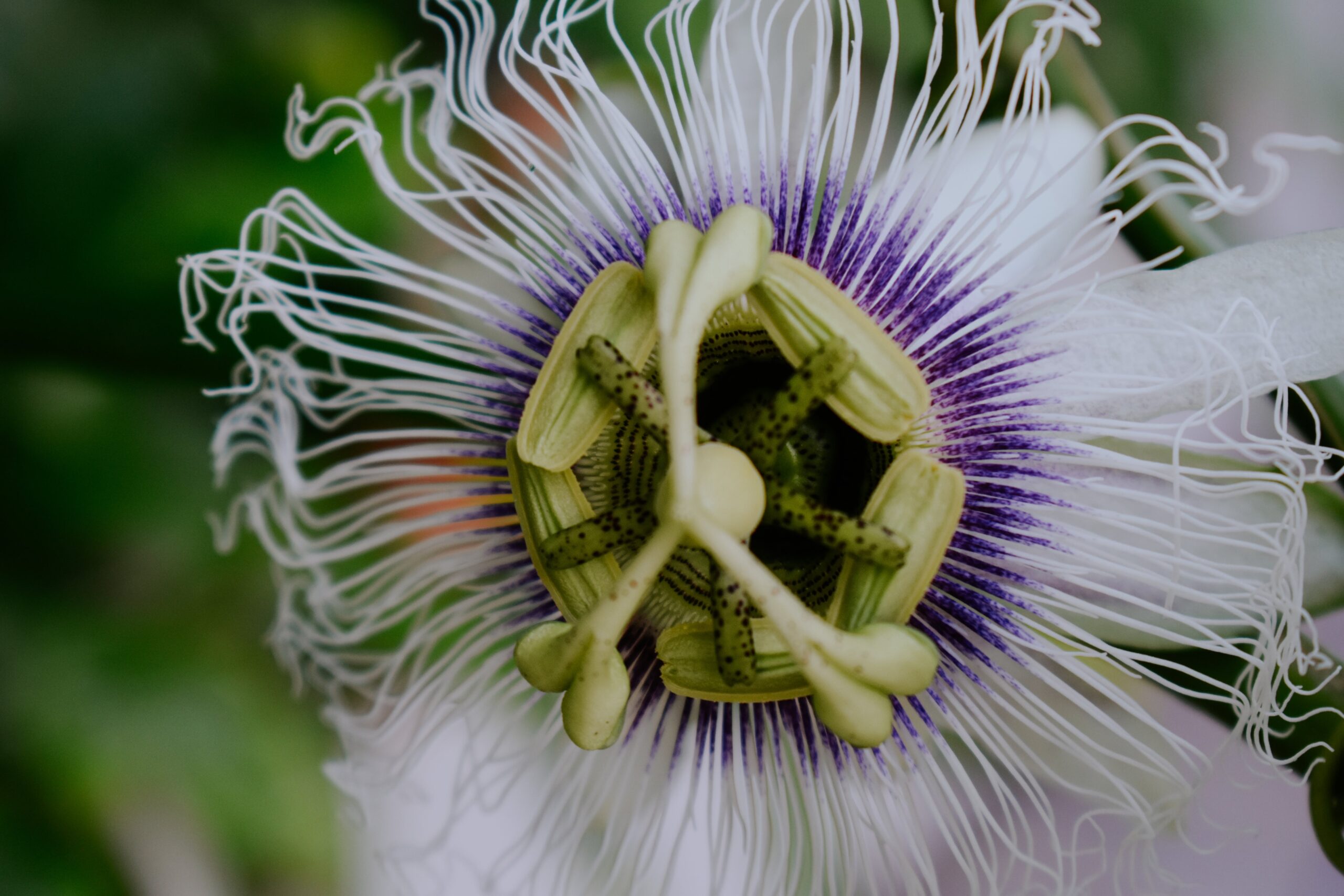
the active role of passiflora on sleep
*This article is written by Dr. Michael Balick, our in-house Ethnobotanist here at sofi. Dr. Balick has worked with indigenous cultures and traditional systems of medicine, all over the world, since the early 1970’s with an incredible and extensive focus on plants, people, and culture.
You can watch the video version of the article by visiting the sofi treehouse here.
Many years ago, I was with a group of friends assembled for a meeting to discuss the science of herbal remedies. One glorious morning, we were sitting around the breakfast table at the beautiful Finca Luna Nueva lodge in Costa Rica. Of course, one of our topics of conversation was about the wonderful breakfast, which included a large bowl of fresh organically grown passion fruits, known by the appropriate scientific name of Passiflora edulis, and pitchers of passion fruit juice. Not common fare for any of us, we had gorged ourselves on these treats during all of our meals at the Lodge for the past week. In passing, one of the group observed, “gosh, I sure sleep well in the rainforest, and my dreams are really vivid. I wish I could stay here forever. It’s so hard to sleep at home with all that we need to get accomplished each day.” Many around the table shook their heads in agreement. We were a group of happy colleagues.
I thought about that statement, and indeed, while a cabin in the rainforest is a wonderfully restful setting, it was clear that there was more going on at this retreat. Passion fruits and the plants that they are harvested from contain bioactive compounds that affect the brain and body in a very good way, promoting sleep and even dreams. In fact, this plant is prescribed as a sleep aid and sedative, based on those very properties.
One reason for this is the presence of a compound known as harmine, a chemical that can inhibit monoamine oxidase and thus prevent the body from removing neurotransmitters in the brain such as serotonin, norepinephrine and dopamine. By increasing the amount of serotonin, norepinephrine and dopamine in the brain, mood is improved and anxiety is reduced. Monoamine oxidase inhibitors are prescribed for certain medical conditions such as depression, and used carefully and monitored for negative side effects. Another beneficial property of passiflora is that it contains a neurotransmitter known as gamma-aminobutyric acid or GABA that can reduce the activity of the neurons that actually cause anxiety, and also lower the activity of some brain cells, all helping in promoting relaxation.
Harmine is one of the active compounds in the widely known psychoactive plant ayahuasca. By inhibiting monoamine oxidase, and thus preventing inhibition of other bioactive plant chemicals found in ayahuasca, these can result in some of the psychoactive effects. Indigenous people have long discovered so-called admixture plants that can be used synergistically with ayahuasca to achieve higher levels of psychoactive activity. I’ve always wondered how people who lived with thousands of different plant species in their environment could have discovered these unique admixtures over time. Surely there are other forces at work here, perhaps those that we as Western scientists have yet to recognise. Were the effects that my herbal friends were describing due to the psychoactive compounds in the fruits they were enjoying? That is the most likely explanation.
A different species of passionflower, Passiflora incarnata, also known as the maypop, is widely used in herbal medicine. The maypop vine grows naturally in fields and along roadsides in southeastern North America extending to the northern parts of South America. The fruits make a popping sound when crushed, hence the name. While the fruits are juicy and edible, it is the other parts of the plant that are of most value for helping us to relax and sleep.
This species of Passiflora is a very determined plant. Someone planted it outside of my office, and it has taken over the walls, even at times pushing its vines into the opening of the door, perhaps curious at what must be going on in my office. And when we attempt to bring her under control, she can push through the asphalt paving and declare that she, not us, is in charge of her destiny. The flowers are characteristic of most other passiflora, with showy blossoms and distinctive plant parts. The Spanish Friars who saw the plant in South America were inspired to name it the “flower of passion” relating to the crucifixion of Christ. This reference was based on the filaments of the blossoms, ten petals, and spike-like anthers protruding from the middle, all symbolic of the crown of thorns.
Native Americans boiled the sweet fruits of Passiflora incarnata to make syrup, and also steeped them in water to make juice. The pulp can also be used in jellies as well as frozen ices, and make a pleasant-tasting desert. In addition to culinary uses, Native Americans made medicinal preparations from the plant, to treat wounds, ear infections and liver problems. They also recognised it as a sedative for nervous conditions.
Herbalists today use passiflora extracts for their sedative and tranquilizing properties, and employ these plants to treat conditions such as insomnia, anxiety and nervousness. In speaking with sofi herbalist Pamela Spence, I learned that she uses Passiflora in her clinic regularly and reports that she hardly ever dispenses a sleep prescription without including it. Extracts are made from the above ground parts of the plant, the flower buds, stems and leaves. If you happen to have a Passiflora growing outside of your office, why not try harvesting the flower buds, stems and leaves, and grinding these up and steeping in hot water, in the same way you might make green tea? Take a cup an hour before bedtime, and see if this helps with relaxation and sleep, However, for serious use and consistent effects, I much prefer standardized and concentrated extracts.
Clinical studies have shown that passiflora extracts can reduce anxiety, and in one study, worked as well as the commonly prescribed medication oxazepam for treating generalised anxiety disorder. At the same time, it had a slower and milder effect, and was less impactful on job performance when compared to the prescribed pharmaceutical alternatives. Another study showed it to be very effective in promoting sleep, improving resilience and quality of life.
There are safety concerns when taking passiflora, including for those who are pregnant or taking blood-thinner medications. For example, there are reports of this herb inducing contractions. When there are questions, it’s always best to consult a knowledgeable health professional.
Recently, I came across a related species of passiflora in the Pacific Islands that had a fascinating medicinal use. I was taught that, to treat a person with headaches, wrap the vine around their head, tie it, and send them to sleep while wearing the vine. The experts who suggested this noted that when the person wakes up the next day, their headache will be gone. In her travels, Pamela came across another tradition in East Africa where people would simply sleep with a stem of the local species of passionflower under their pillow as a sleep aid.
Why and how these traditions have come to be, and how they work would be a complicated research project in and of itself, and must wait for another day. In the meantime, we should all be learning the lessons from Mother Nature, and strive for sleep that is sufficient in length, restorative and above all, restful.

